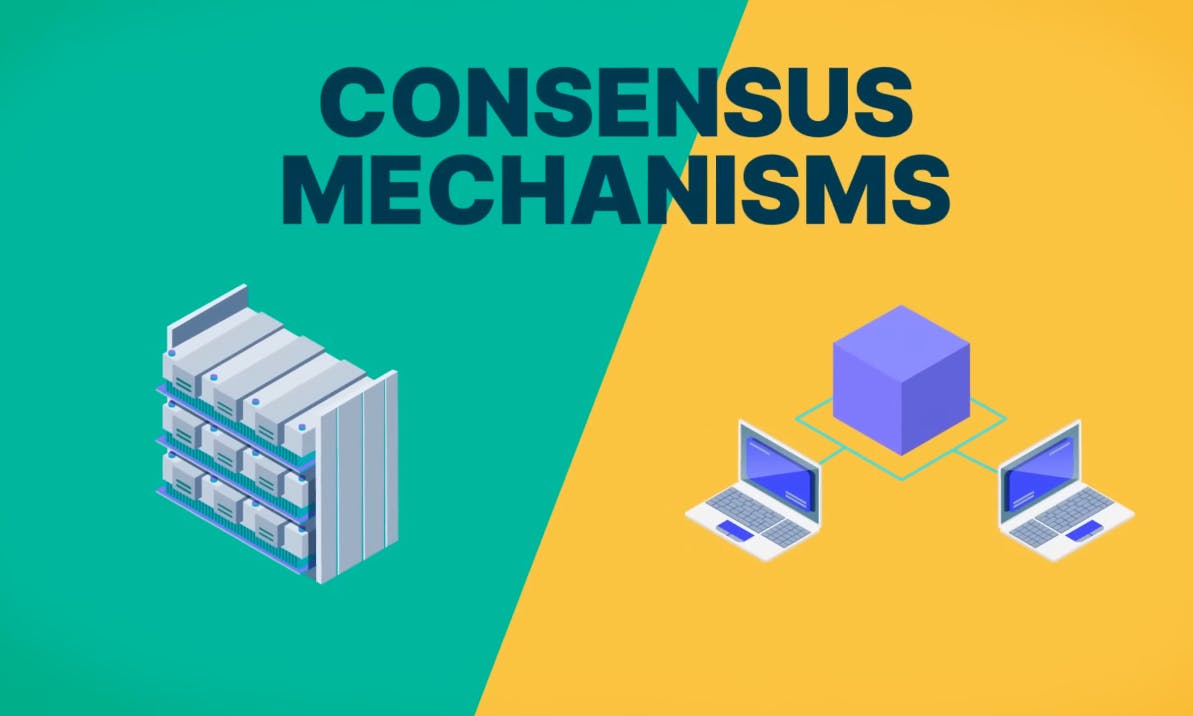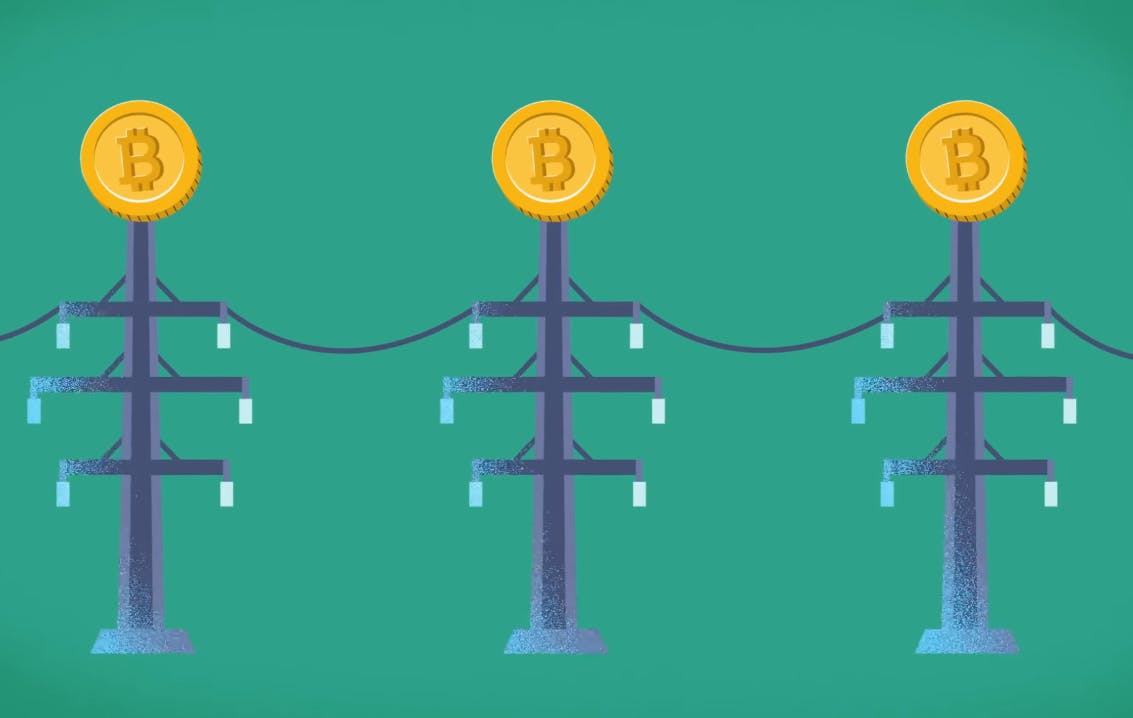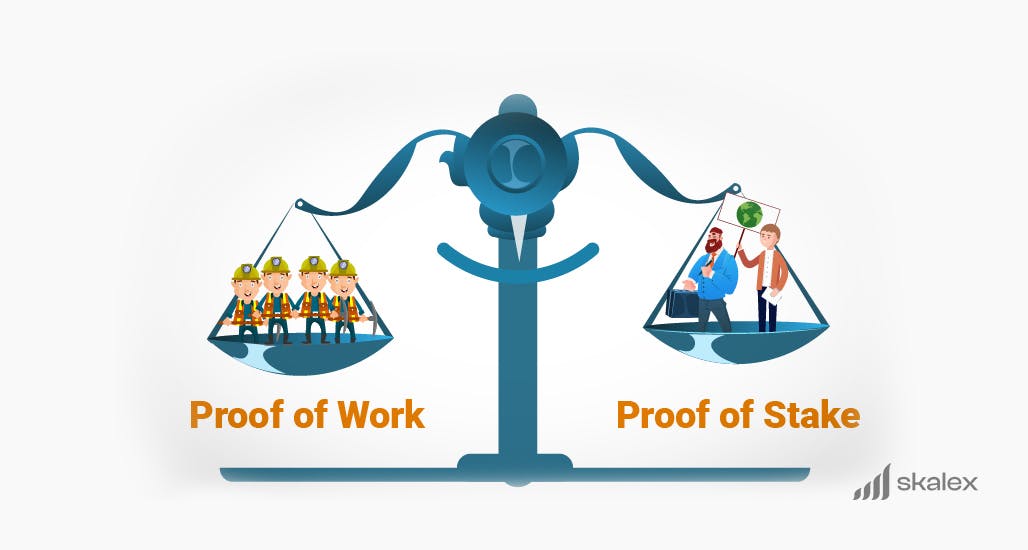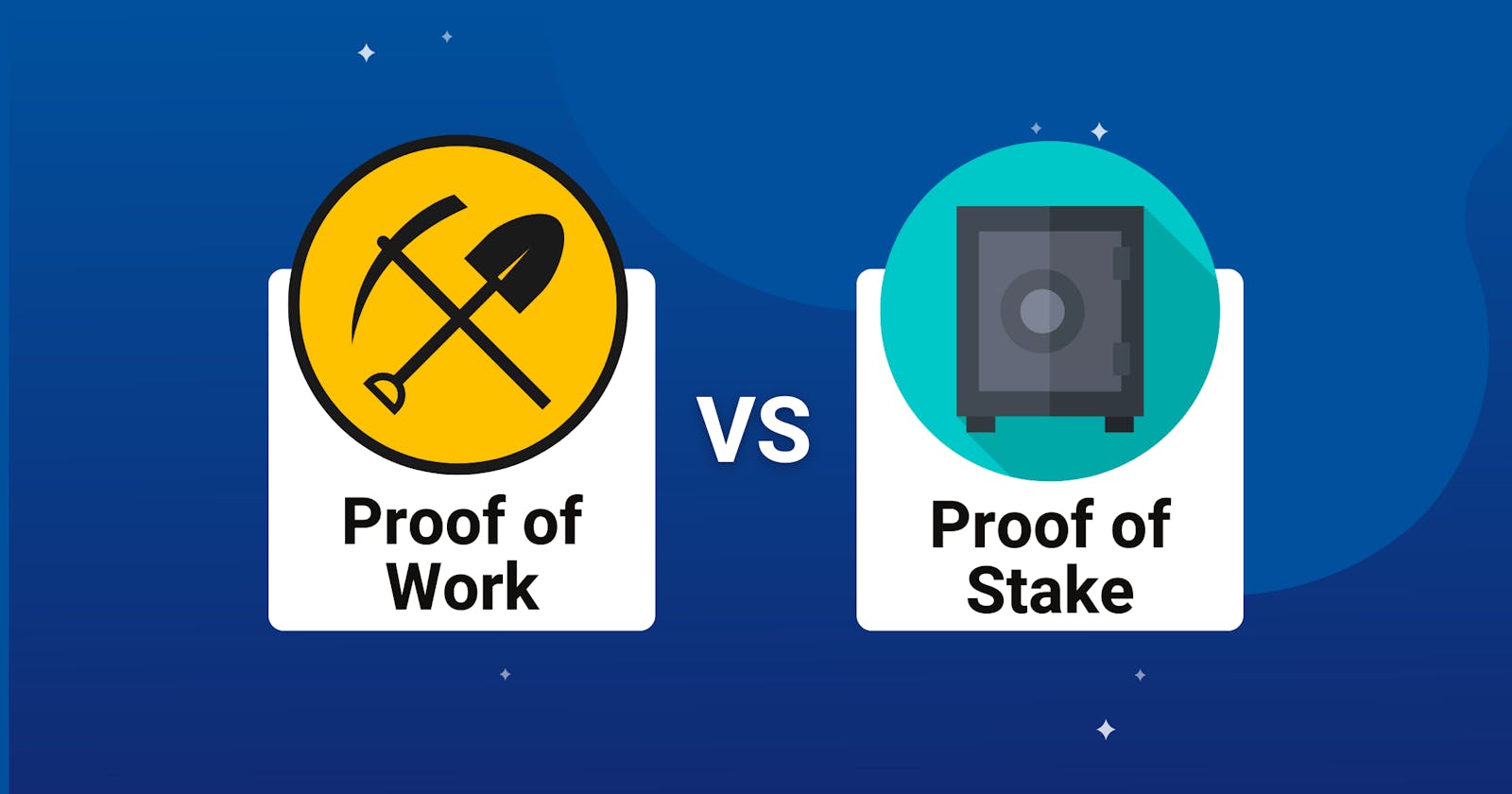Blockchain is by far one of the amazing technology out there in the world. It has massive demand and growth opportunities for developers. The reason being its decentralized nature and transparency, and many more. This blog is intended to provide all the possible information about Proof of Work (PoW) and Proof of Stake (PoS), so that the reader should get each possible insight after reading this blog. So what is Proof of Work and Proof of Stake? why they're important to discuss? what's their importance in blockchain... So let's dive deeper into this!

Proof of Work (PoW) and Proof of Stake (PoS) are consensus mechanisms which are used in blockchain to add a new transaction into blockchain. In proof of Stake we have validators. validators are just like miners (Servers) and they validate each transaction happening on blockchain, they also add new blocks to the blockchain and are compensated (incentivized) for their efforts. Validators must cast votes on proposals as part of governance. Weighting for validators is based on their entire stake. As we know there are so many miners in a blockchain, so the question may arise that "who will validate a particular or specific transaction?" or "who will be assigned as a validator?". For that the consensus mechanism are being used by different blockchains to make this process of assigning validators easier. Now lets see what is Proof of Work (PoW).
Proof of Work (PoW)
Proof of Work(PoW) is a consensus mechanism which is used by blockchains like Bitcoin. In Proof of Work (PoW) each miner solves a complex algorithm like SHA256, and the one who solves it quickly and before other miners gets reward or gets incentivized.
 Due to proof of work, it is very challenging to change any aspect of the blockchain because doing so would necessitate mining all new blocks. Additionally, because the equipment and power needed to perform the hash functions require a significant investment, it becomes difficult for a single user or group of users to monopolise the network's computing power.
Now in the whole process of assigning validator by Proof of Work (PoW) is a bit complex and not efficient because of the following reasons:
Due to proof of work, it is very challenging to change any aspect of the blockchain because doing so would necessitate mining all new blocks. Additionally, because the equipment and power needed to perform the hash functions require a significant investment, it becomes difficult for a single user or group of users to monopolise the network's computing power.
Now in the whole process of assigning validator by Proof of Work (PoW) is a bit complex and not efficient because of the following reasons:
Energy Loss:
As we know by far that in this process, a great number of miners (Servers) solves a complex algorithm, and that process requires a lot of energy as all the miners requires energy.
 And hence it makes it less efficient to use, because the process requires a lot of energy for validating the transactions being made on blockchain.
And hence it makes it less efficient to use, because the process requires a lot of energy for validating the transactions being made on blockchain.
Slow and time consuming:
Since each miner, works upon solving the complex algorithm, it makes the process of assigning the validators and then further adding the transaction into the main chain slower. This is one of the major drawback of Proof of Work consensus mechanism.
Chances of Fraud:
As in this mechanism, miners tries to solve the algorithm to get incentivized, there are chances where a group of people solve the same problem together with a machine and then get incentives, which they distribute equally together between each others. This act makes the whole system bias and makes the decentralization nature of the blockchain vulnerable as only a group of people is getting assigned as validator and getting incentives again and again.
 So that's about proof of work and how its less efficient to use. That's the reason why after Ethereum merge the Ethereum blockchain switch its old consensus mechanism to Proof of Stake (PoS)
So that's about proof of work and how its less efficient to use. That's the reason why after Ethereum merge the Ethereum blockchain switch its old consensus mechanism to Proof of Stake (PoS)
Proof of Stake (PoS)

If you've read so far, then you know what is Proof of Work (PoW) and how its not that much efficient for blockchain. now talking about Proof of Stake (PoS), its a consensus mechanism for processing transactions and adding new blocks to a blockchain in cryptocurrencies is called proof-of-stake. Since the database in the case of cryptocurrencies is referred to as a blockchain, the consensus process protects the blockchain.
Block and transaction verification requires less computational work when using proof-of-stake. Proof-of-work maintained blockchain security. Proof-of-stake reduces the amount of computing labour required by changing how blocks are confirmed using coin owners' devices. In exchange for the opportunity to validate blocks and subsequently become validators, the owners stake their currencies as collateral. Validators are chosen at random to verify blocks of information and confirm transactions. Instead of employing a competitive rewards-based approach like proof-of-work, this system randomly selects who is eligible to receive fees.
How PoS differ from PoW
Blockchains are able to conduct transactions, validate data, and synchronise data thanks to both consensus mechanisms. Although each method has advantages and disadvantages, they have all been demonstrated to be effective at maintaining a blockchain. The two algorithms, however, take very different approaches.
Block creators are known as validators in a PoS system. A validator examines transactions, confirms activity, casts votes on results, and keeps records. Block creators are referred to as miners in PoW. To validate transactions, miners try to get the hash, a cryptographic integer. They receive a coin as payment for cracking the hash.

Because more computers and network users must evaluate and approve transactions, proof of work is a more decentralized method of confirming transactions on a blockchain. The more decentralized the better, in the eyes of many crypto fans and purists.
However, having more computers also means using more energy. Over the past year or so, as more individuals have been interested in the industry, the environmental effects of cryptocurrency mining have come under increased attention. Because of the complexity and greater entrance barrier, which are primarily intentional, the crypto market is less vulnerable to hackers and attacks, another problem.
Advantages of Proof of Stake (PoS)
Decentralized Nature
Since running nodes is more economical, users are being urged to do so more frequently. According to a blog post by the cryptocurrency exchange Binance, the network is becoming more decentralised thanks to this incentive and the randomization process. Even though there are different stake pools, under PoS, a person has a far higher probability of successfully forging a block. Energy effectiveness with a green system, compared to PoW, PoS is more energy-efficient. Instead of the computing cost of solving puzzles, the cost of participation is determined by the economic cost of staking coins. As a result, the consensus method consumes less energy, making the system more environmentally friendly.
Less Manipulation
PoS reduces the need for intricate calculations, increasing energy efficiency. Those that own the largest amounts of the network's native currency gain the authority to validate transactions. Players that have a big stake in the system are less inclined to try to rig it. They risk having their stake destroyed if they do it.
Adaptive
This is also another benefit of PoS. PoS is evolving along with blockchains and user needs. Because of the mechanism's flexibility, more blockchain use cases can readily be accommodated.
Scalability and High Throughput
In comparison to PoW, PoS offers more throughput and scalability. This is so that blocks and transactions can be approved more quickly without having to solve incredibly difficult calculations.
Hileman claims that proof of stake (PoS) has "two main advantages over proof of work: PoS can be less energy-intensive and have greater transaction throughput (speed) and capacity." In terms of scalability, PoS generates consensus without the use of physical machines. It is therefore more scalable as a result. There is no requirement for huge energy sources or mining farms. The network will become more affordable, streamlined, and accessible as more validators are added.
Fast & Secure
It is possible to think of staking as a financial incentive for the validator to reject fraudulent transactions. In the event that the network identifies a fake transaction, the validator will forfeit some of their ownership as well as their future participation rights. PoS outperforms PoW in terms of speed as well. for example "For instance, Ethereum only handles 30 transactions per second as a proof-of-work blockchain. Once it switches to proof of stake and launches its shard chains, the network anticipates processing up to 100,000 transactions per second.
